
|
|
|
|
The mass production of the powerful two-rows engine Shvetsov M-82 began
on May 1941 at the Zavod 19 in Perm.
The designers A.I. Mikoyan, N.N. Polikarpov, P.O.Sukhoi and A.S. Yakovlev
had the duty to try to install this engine on their aircrafts.
The first flyable engine was delivered to OKB-155 on 18 May, and the
drawings of the prototype were ready in mid June, being July 1, 1941 the
deadline of first flight.

The new machine, called I-210 or MiG-9, differed from the standard MiG-3 for:
|
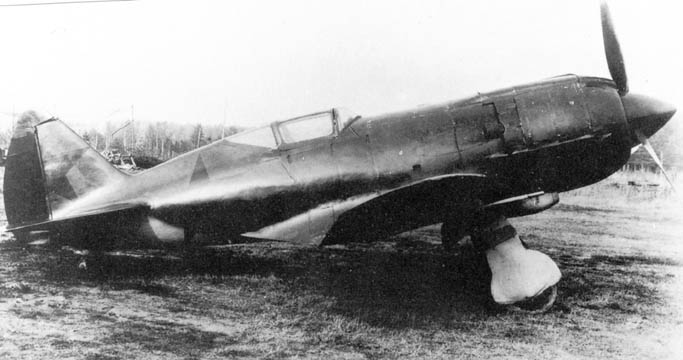 |
A top speed of 630 km/h at the altitude of 6500 m and 530 km/h at the
ground level were calculated.
The first example, n.6501, first took off on July 23, 1941, flown by
the NII-VVS test pilot M.I.Martselyuk.
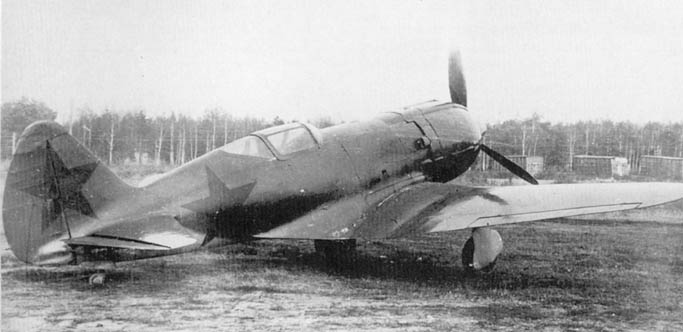 |
The second prototype, n.6502, started armament tests on August 25;
they removed the left side ShKAS.
Its flight tests were conducted by test pilot A.P. Yakimov. The NII-VVS made its report on MiG-9 tests at the end of August. They appreciated the strongest armament, the better takeoff properties and higher speed and rate of climb at low altitudes. The top speed was disappointingly low, 540 km/h at 5000 m. |
| During September 1941, MiG-9 n.6501 was tested in the large T-104 wind
tunnel of TsAGI, that confirmed the negative influence of non-hermetic
engine cowling on the drag.
This would require modifications to the fuselage, but this wasn't possible because of the evacuation of Zavod 1 and OKB in Kuybyshev in October. Three further machines, n.6503, 6504, 6505 were built in Kuybyshev under difficult conditions; they were assembled in the open air because the roof of the workshop wasn't yet built. They were provided with starter teeth on the spinner, and ShKAS gun on a bit lower position than on n.6502. Shortage of Mikulin engines due to the Il-2 priority was already on the air, and Mikoyan hoped to mantain his aircraft on production with the new M-82 engine. |
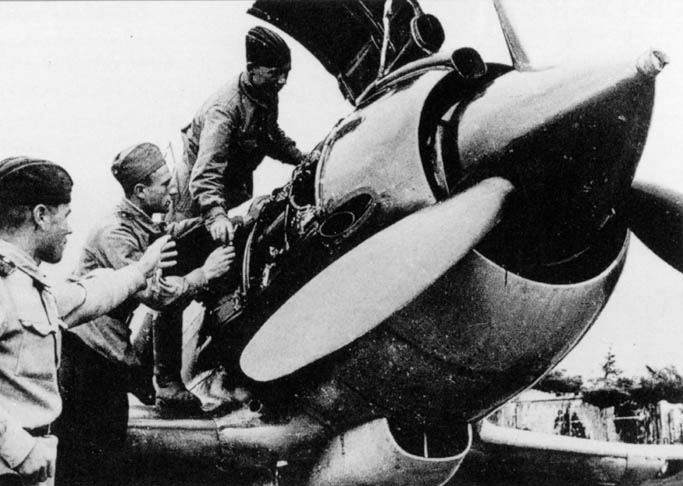 |
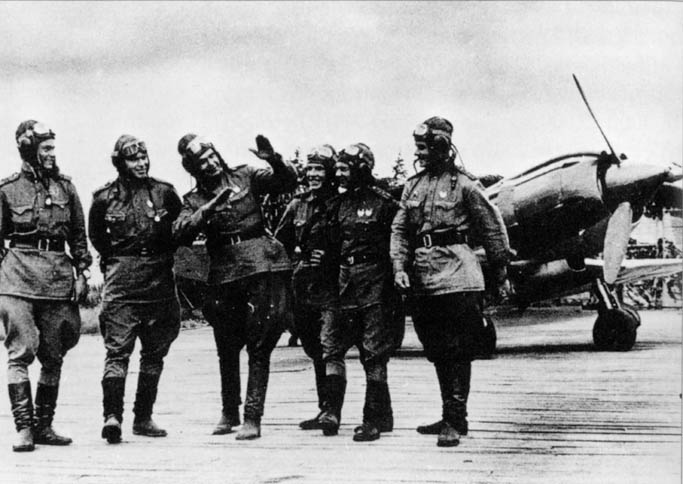 |
Further tests were made in January 1942 to n.6502, flown by test pilot
V.N. Savkin; this demonstrated the absence of engine overheating and that
spin properties were better than the original MiG-3.
When OKB-155 returned to Moscow from Kuybyshev during the spring, all
the prototypes were finished.
|
| On September, n.6502 started the NII-VVS official tests; all the ShKAS
were removed, leaving 3 UBS.
Tests were headed by chief engineer I.G.Lazarev and test pilot V.E. Golofastov. It was necessary to send it repeatedly to OKB-155 for finishing the power plant, so tests lasted two months. A disappointingly low speed was reached, no more than 565 km/h at 6150 m; besides, the engine plant was unsatisfactory both as ease of maintenance and functioning at low rpm. |
 |
The poor visibility and the necessity to fly with open cockpit to reduce
fumes in the cockpit were defects common to the usual MiG-3.
The aircrafts n.6503, 6504, 6505, after modifications, were delivered
to 260 SAD 7 VA on the Karelian front on 27 June 1943; they were
employed operatively for about a year before being written off.
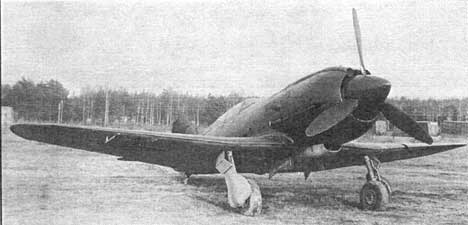 |
Notes on colours:
|
| MiG-3
late |
I-210 | |
| first flight | aug. 1941 | early 1942 |
| built | about 2,000 | 5 |
| engine
type |
AM-35A | M-82 |
| power | 1,200/1,350 hp | 1,330/1,500 hp |
| Max speed
with closed canopy |
640 km/h
at 7000 m |
565 km/h
at 6000 m |
| max speed at sea level | 466 km/h | 475 km/h |
| ceiling | 12,000 m | 8,700 m |
| climb to 5,000 m | 7'07'' | 6'42'' |
| lenght | 8,25 m | 8,08 m |
| wingspan | 10,2 m | 10,2 m |
| wing area | 17,6 sq.m | 17,44 sq.m |
| empty weight | 2600 kg | 2700 kg |
| gross w. | 3350 kg | 3400 kg |
| fuel (kg) | 495 kg | 360 kg |
| fixed armament | 1x12.7 mm UBS
+ 2x 7.62 mm ShKAS |
3x12.7 mm UBS |
| fall or launch armament | 6x 82 mm rockets
or 2x100 kg bombs or 4x25 kg bombs |
6x 82 mm rockets
or 2x100 kg bombs or 4x25 kg bombs |
|
|